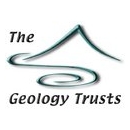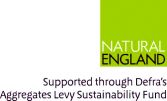(2001 – 2002)
This was the first collaborative project between the counties that would later constitute The Geology Trusts. Funded by the Department of the Environment, Transport and the Regions (DETR) and coordinated by Herefordshire & Worcestershire Earth Heritage Trust, the project successfully resulted in 330 new Regionally Important Geological Sites (RIGS) being designated, despite the Foot and Mouth crisis interrupting fieldwork.
The total project costs including ‘in kind’ matched funding was £136,000 of which DETR contributed 50% from their Environmental Action Fund. It allocated £9500 to each of the partner groups (Avon RIGS Group, Gloucestershire Geoconservation, Herefordshire and Worcestershire Earth Heritage Trust, Oxfordshire RIGS Group, Shropshire RIGS Group, Warwickshire Geological Conservation Group and Wiltshire RIGS Group) for their share of the combined workload of the programme. The project was innovative in being the first example of a collaborative bid to achieve a joint goal by local geoconservation groups in the UK.
The project objectives were to accelerate the rate of RIGS designations, to research, record and designate a total of 300 RIGS and to produce proposals for educational and recreational use of the sites.
A management team, comprising of representatives from each of the counties, was established to oversee the smooth delivery of the project objectives and targets. Meetings were held every. Early progress saw the appointment of 7 project officers and the installation of new computers and software at county centres. The regular meetings were useful for the appointed project officers to share best practice and discuss issues and problems with the project. There were quarterly reviews of target performance against pre-set levels for site recording, expenditure, volunteer input and staff costs. The management team also discussed other geoconservation issues, future funding bids and work programmes. These meetings were also used as opportunities for internal training seminars, which focused on database recording, conservation and group development.
The project suffered badly in the first 6 months from the access restrictions imposed by the “foot and mouth” outbreak in spring/summer 2001. However the project management team successfully restructured the work programme so that all objectives were still met in the original time frame.
The legacy of the project was significant. The individual groups became both organisationally and financially more secure. For some the steady income for a dedicated project officer over a 12-month period allowed them to grow and expand their horizons. The regular meetings and good working relationships allowed for the adoption of “best practice” methods and other shared experiences. All the partner groups purchased new computers and standardised databases were developed. There was a 60% increase in the number of Regionally Important Geological Sites (RIGS) in the eight counties, with the project target of 300 new RIGS being exceeded by 10% – 330 sites were designated in total.
The management committee made 4 recommendations following the completion of the project:
- All RIGS should be monitored on a regular basis preferably more frequently than the 6 yearly visit to SSSIs. An assessment of the condition of the site should be made no less frequently than every 3 years (funding permitting!).
- All sites should be subject to maintenance work for such matters as vegetation, fly tipping, vandalism, scree and soil encroachment and development.
- The local heritage of these RIGS should be brought to the attention of the local authority and community groups.
- Approaches should be made to DEFRA (Department for Environment, food and Rural Affairs) seeking recognition of the importance of RIGS in the framework of Geodiversity and the Department should be encouraged to provide funding to cover the activities of groups engaged in surveying and selecting RIGS and in the work specified above.
The project showed that, with funding, county geoconservation groups could make substantial progress in the task of completing county wide recording of the local stratigraphy, petrology, palaeontology and geomorphology and provided highly competent and cost effective work. Geoconservation groups showed that their landscape designation and monitoring role gave a complimentary balance to the work and service provided by the Wildlife Trusts and as such, was becoming an indispensable part of the conservation movement.

 Copyright © 2025
Copyright © 2025